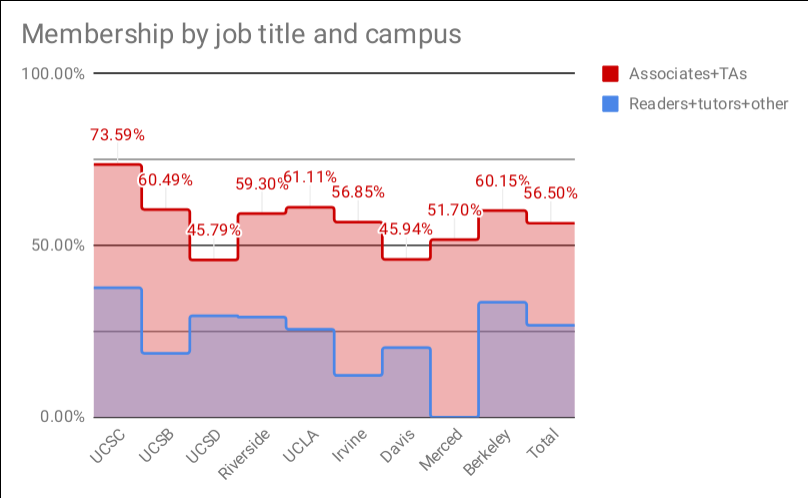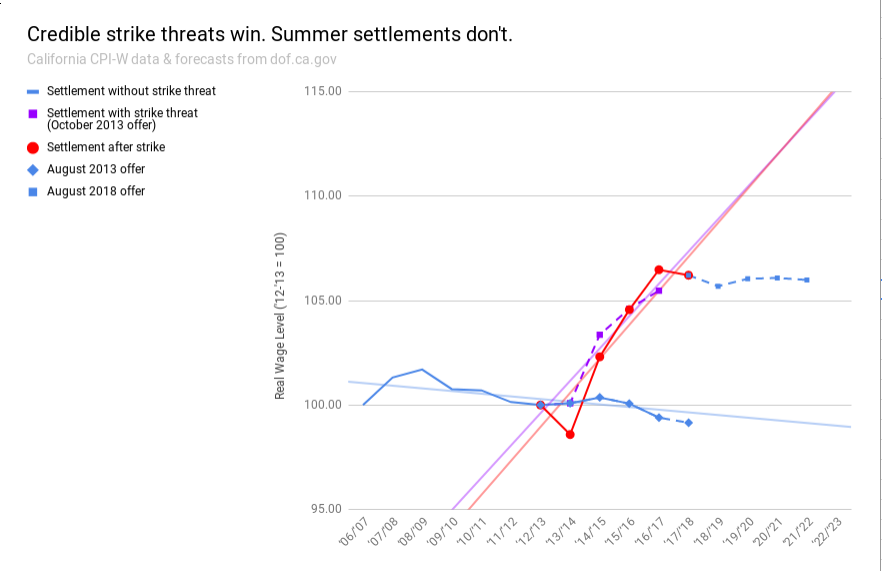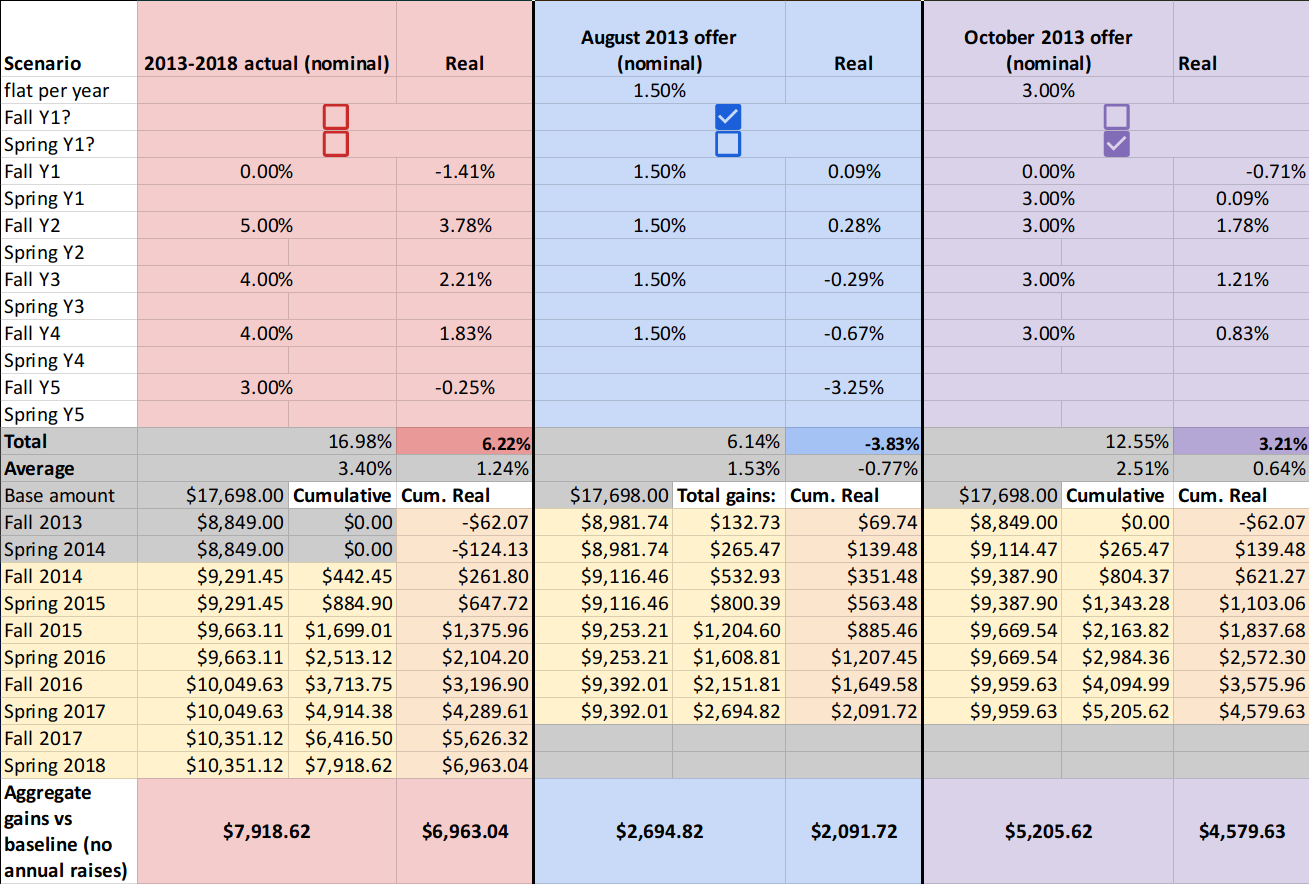Looking at the numbers – of members, of wages, and of cost of living – the case for settling just doesn’t add up.
1. Membership numbers and strike capacity

Pro-settlement arguments have invoked the idea that we would only be able to do a “super-minority strike”. This is based on a misleading way of assessing membership numbers. Our bargaining unit has grown significantly in the last five years – from about 11,000 to nearly 17,000. Most of that increase, has been readers and tutors.
Strike capacity refers to our ability to physically disrupt business as usual. When assessing our power, we should be looking at
(1) The membership proportion among the most visible workers — the instructors, who teach sections and conduct office hours at a specific time and place. This is where percentage matters, and we have 56%.
(2) Raw membership numbers (not percentage). The physical campuses have not grown. Outside of canceling classes, our power largely comes from our ability to turn large numbers of people out on the ground. This is where our membership among tutors and readers matters most – and our growth there has brought us from about 4,700 members total in 2013-2014, to nearly 8,000 members today. That’s 73% of the size of our entire bargaining unit in 2013.
We have far more power than the simple membership percentage number makes it seem, and far more power than we did in 2013-2014, by any measure. But we’re being asked to ratify a contract that is *worse* than what we won in 2013-2014, by every measure.
2. It’s summer. No offer is “final” until we have a credible strike threat
There will be valid debate to be had over strike vs. settle, but not until we have a credible strike threat motivating management to dig deeper. Last contract, building a credible strike threat got management to double their “final” wage offer between August and October – before we actually decided to strike.

The offer on the table at the end of summer 2013 was similar, in real terms, to what we are being asked to settle for now. But instead of settling in August for a real wage cut (the first blue dashed line in the graph), we extended the contract into October. Refusing to settle in summer – when most of our members aren’t working – enabled us to build up a credible strike threat.
The results are indisputable: Just before our strike, management offered twice what they had claimed was “final” in August. This is the purple line in the graph. And by pushing past contract expiration, we were able to strike and win even more (red).
When management sees that our membership is willing to fight, they put more more on the table. When we fight, we win. Not ratifying tells them that we are willing to fight for more, so they need to come up with better.
3. “Lost raises”

Note: there is some inherent distortion in comparing five years to four. It is correct to say we should look at the last contract as 0/5/4/4/3 rather than simply 5/4/4/3. But it would be no less misleading to treat it as 0/5/4/4 for the sake of comparing it to 1.5/1.5/1.5/1.5 or 3/3/3/3. We don’t know what our 2017-2018 wages would have been if we had settled for a 2013-2017 contract. The summations in this table consider the cumulative losses and gains over the entire bargaining+contract period. Since the base pay is subtracted out, this is a comparison of four years to four years that still penalizes the 5/4/4/3 for the leading 0. More analysis here.
We have worked hard this year to educate, agitate, and organize record numbers of student-workers toward collective action to improve our working conditions. The power we have built – and that UCOP is afraid of – is on the ground, not in the bargaining room. UCOP is bluffing when they say we have to settle this week or else lose even more than this contract takes away. We only ever win by calling the boss’s bluff. We owe it to ourselves and to each other, to not settle for less.
3 thoughts on “How to build a credible strike threat in three easy charts”